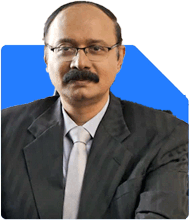37-year-old with Rs.40 lakhs seeks investment advice for children's future and retirement
Ramalingam Kalirajan |10881 Answers |Ask -Follow
Mutual Funds, Financial Planning Expert - Answered on Aug 13, 2024
He has an MBA in finance from the University of Madras and is a certified financial planner.
He is the director and chief financial planner at Holistic Investment, a Chennai-based firm that offers financial planning and wealth management advice.... more

Sir, im 37 yrs old married man with two children. I have around 40 lakh which i would like to invest for better future of my children along with getting some fund for self & wife during oldage. Please guide.
Allocating Funds for Children’s Future
Education Fund: Invest a portion in child education-specific mutual funds. These funds are actively managed and can help in building a substantial corpus over time. Regularly review the fund’s performance with a Certified Financial Planner.
Long-Term Growth: Consider investing in equity mutual funds for long-term growth. Equity funds, managed by professional fund managers, can potentially offer higher returns over time.
Securing Your Retirement
Retirement Corpus: Allocate a portion to retirement-focused mutual funds. These funds, actively managed, can help in growing your corpus while mitigating risk.
Systematic Withdrawal Plan (SWP): Once you retire, you can opt for SWP from your accumulated corpus. SWP provides a regular income, which can be beneficial in managing expenses during retirement.
Balancing Safety and Growth
Debt Funds: For a balanced approach, invest in debt funds. These funds offer stable returns with lower risk, making them ideal for preserving capital.
Diversification: Ensure your investments are diversified across different asset classes. This reduces risk and increases the chances of achieving your financial goals.
Regular Review and Adjustment
Periodic Review: Regularly review your investments with a Certified Financial Planner. Adjust the portfolio as needed based on market conditions and your changing financial needs.
Emergency Fund: Keep a portion of your funds liquid in case of emergencies. This ensures you are not forced to withdraw from your long-term investments.
Final Insights
Avoid ULIPs and Insurance-Based Investments: These often combine insurance with investment, leading to higher costs and lower returns. Instead, focus on pure investment products and separate term insurance for adequate coverage.
Active Management: Actively managed funds often outperform passive index funds, especially in the Indian market. Ensure your investments are in funds managed by experienced professionals.
Investing with a clear strategy can help you secure your children’s future and ensure a comfortable retirement for yourself and your spouse. Regular reviews and adjustments are essential for staying on track.
Best Regards,
K. Ramalingam, MBA, CFP,
Chief Financial Planner,
www.holisticinvestment.in
You may like to see similar questions and answers below
Sanjeev Govila | Answer |Ask -Follow
Financial Planner - Answered on Nov 27, 2023
Ramalingam Kalirajan |10881 Answers |Ask -Follow
Mutual Funds, Financial Planning Expert - Answered on Jul 06, 2025
Ramalingam Kalirajan |10881 Answers |Ask -Follow
Mutual Funds, Financial Planning Expert - Answered on Jul 12, 2025
Ramalingam Kalirajan |10881 Answers |Ask -Follow
Mutual Funds, Financial Planning Expert - Answered on Sep 08, 2025
Ramalingam Kalirajan |10881 Answers |Ask -Follow
Mutual Funds, Financial Planning Expert - Answered on Dec 12, 2025
Ramalingam Kalirajan |10881 Answers |Ask -Follow
Mutual Funds, Financial Planning Expert - Answered on Dec 12, 2025
Reetika Sharma |423 Answers |Ask -Follow
Financial Planner, MF and Insurance Expert - Answered on Dec 12, 2025
Reetika Sharma |423 Answers |Ask -Follow
Financial Planner, MF and Insurance Expert - Answered on Dec 12, 2025
Reetika Sharma |423 Answers |Ask -Follow
Financial Planner, MF and Insurance Expert - Answered on Dec 12, 2025
Reetika Sharma |423 Answers |Ask -Follow
Financial Planner, MF and Insurance Expert - Answered on Dec 12, 2025
Reetika Sharma |423 Answers |Ask -Follow
Financial Planner, MF and Insurance Expert - Answered on Dec 12, 2025
Mayank Chandel |2572 Answers |Ask -Follow
IIT-JEE, NEET-UG, SAT, CLAT, CA, CS Exam Expert - Answered on Dec 11, 2025
Mayank Chandel |2572 Answers |Ask -Follow
IIT-JEE, NEET-UG, SAT, CLAT, CA, CS Exam Expert - Answered on Dec 11, 2025
Ramalingam Kalirajan |10881 Answers |Ask -Follow
Mutual Funds, Financial Planning Expert - Answered on Dec 11, 2025










.jpg)













